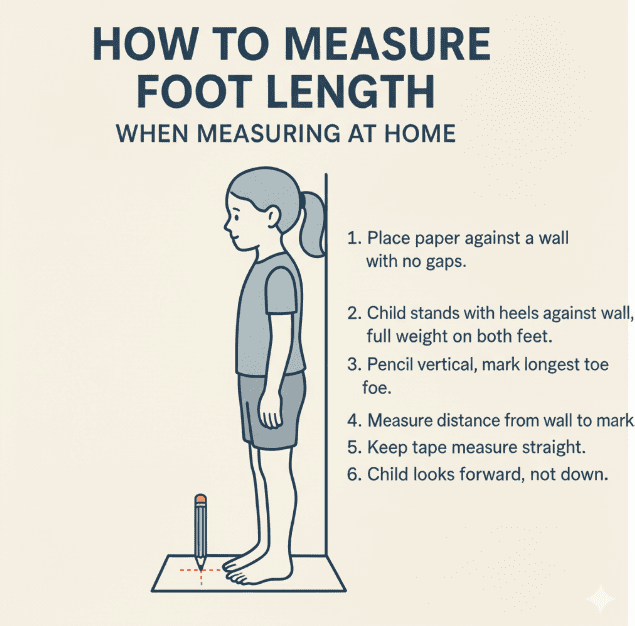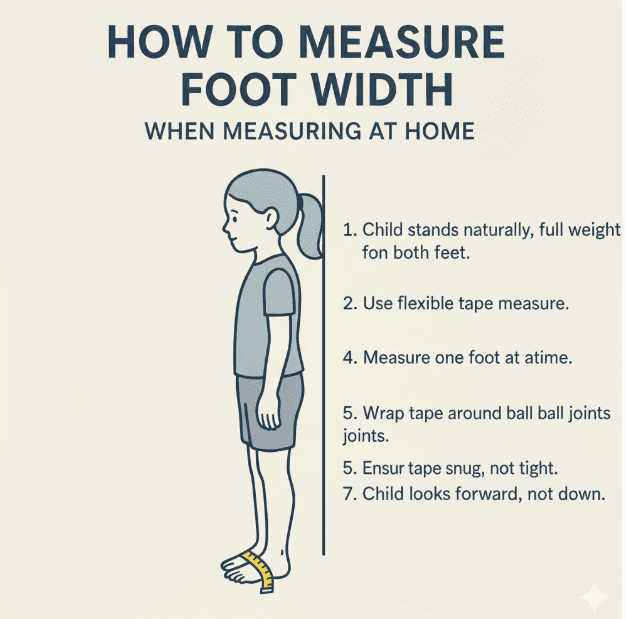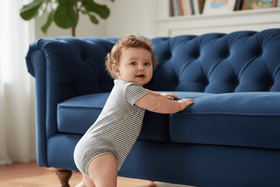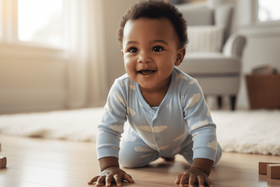How to Measure Shoe Size at Home: Easy Steps for Kids' Feet
Published November 5, 2025
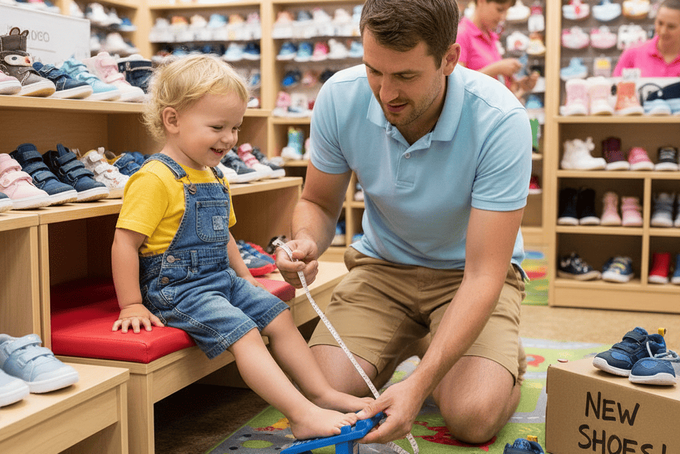
It's a very common situation to find yourself confused about your child's shoe size. Especially if you need to buy shoes but can't get to a store for a professional fitting. Or maybe you're shopping online and want to get the size right the first time.
Learning how to measure shoe size at home isn't difficult. With a few household items and the right technique, you can get measurements just as accurate as many shoe stores. Let's walk through exactly how to do it.
How to Measure Your Child's Foot Length at Home
Gather these items before you start:
- Blank paper (larger than your child's foot)
- Pencil or pen
- Ruler or tape measure
- You will need to do this with your child standing in front of a wall
Step 1: Place a sheet of paper flat against a wall with no gaps underneath.
Step 2: Have your child stand on the paper with their heel touching the wall. Make sure they're standing straight with full body weight distributed evenly on both feet, not sitting, and not leaning.
Step 3: Hold your pencil perfectly vertical (at 90 degrees to the paper) and mark where the longest toe ends. This might not be the big toe. It varies by child.
Step 4: Measure the distance from the wall edge to your pencil mark. This is your child's foot length.
Step 5: Repeat with the other foot. If one foot is often slightly longer, you'll size shoes to the larger foot.
Remember, your child must be standing with full weight on both feet. Not placing body weight on the foot during measurement causes inaccuracies of 0.5 to 1 cm, enough to get the wrong shoe size entirely.
How to Measure Your Child's Foot Width at Home
Step 1: Have your child stand naturally with full body weight evenly distributed on both feet.
Step 2: Measure only one foot at a time using a flexible tape measure.
Step 3: Find the ball joints; these are the first hard bumps you feel when sliding your fingers forward from the heel along each side of the foot.
Step 4: Wrap the tape measure around the widest part of the forefoot at these ball joints. Keep the tape snug but not tight; it should touch the skin without compressing the foot.
Step 5: Record the measurement and repeat with the other foot.
Many parents measure straight across the toes instead of at the ball joints, and this results in shoes that feel painfully tight even when the length seems right. Always measure at the ball joints for accurate width.
Adding Growing Room and Using a Kids' Shoe Size Chart
After measuring your child's foot, add about 10-12mm (roughly a thumb's width) to the length before choosing a size. This space allows natural toe movement during walking and running while accommodating growth [1].
Too little restricts movement, while too much causes children to grip with their toes to keep shoes on, affecting foot development and increasing falls. For toddlers, be conservative with extra space since oversized shoes negatively affect developing balance and gait.
Once you have the measurement plus growing room, consult a kids' shoe size chart. Take your child's foot length in millimeters, add the 10-12mm, then match this total to the "foot length" column on the brand-specific chart.
For example, if your child's foot measures 160mm, look for 170-172mm on the chart, then read across to find the size. Always use the brand's specific chart—the same size number varies by 4-6mm between manufacturers, and a US size 10 doesn't equal a UK or EU size 10.
Getting the Fit Right for Your Child's Feet
Knowing how to measure shoe size at home saves time and reduces the guesswork of online shopping when buying pre-walkers or even shoes for preschool. The simple technique gives you reliable numbers for confident shoe buying.
Remember to measure both feet since one is often larger, add that crucial thumb's width of growing room, and always use brand-specific sizing charts. Check measurements every 2-3 months for toddlers and every 4-6 months for older children, as growth happens in spurts.
With proper measurements and shoes designed for growing feet, your child gets the support and comfort they need. First Walkers provides precise sizing charts and features like adjustable closures and flexible soles that work with your home measurements to ensure proper fit.
References
Dpm, D. R., & Dpm, D. R. (2025, January 22). Is the “rule of thumb” useful in fitting shoes? - The Richie Brace. The Richie Brace - The Gold Standard in AFOs. https://richiebrace.com/is-the-rule-of-thumb-useful-in-fitting-shoes.html
Disclaimer: First Walkers' information is intended for educational and informational purposes related to toddler footwear and feet. We encourage you to consider individual circumstances and consult qualified orthopedists about specific conditions.
FAQs
Should I measure my child's feet in the morning or afternoon?
Always measure in the late afternoon or early evening. Children's feet naturally swell throughout the day from activity and gravity. Morning measurements may result in shoes that feel tight by afternoon.
What if my child's feet are different sizes?
This is completely normal. One foot is often slightly longer or wider than the other by a few millimeters. Always measure both feet and choose shoe size based on the larger foot's measurements.
How often should I remeasure my child's feet?
Check measurements every 2-3 months for toddlers and every 4-6 months for children aged 4-12. Growth happens in spurts rather than steadily, so regular checking ensures shoes continue fitting properly.
Can I use smartphone apps to measure feet?
Use apps with caution. Lighting angles, phone positioning, and camera lens distortion can create inaccuracies. Apps should supplement, not replace, physical measurements with paper and ruler.
Should I account for sock thickness when measuring?
Yes. If your child wears thick winter socks or uses orthotics, have them in place during measurement. Thick socks add 2-4mm to foot dimensions that affect final shoe fit.

